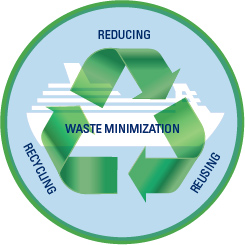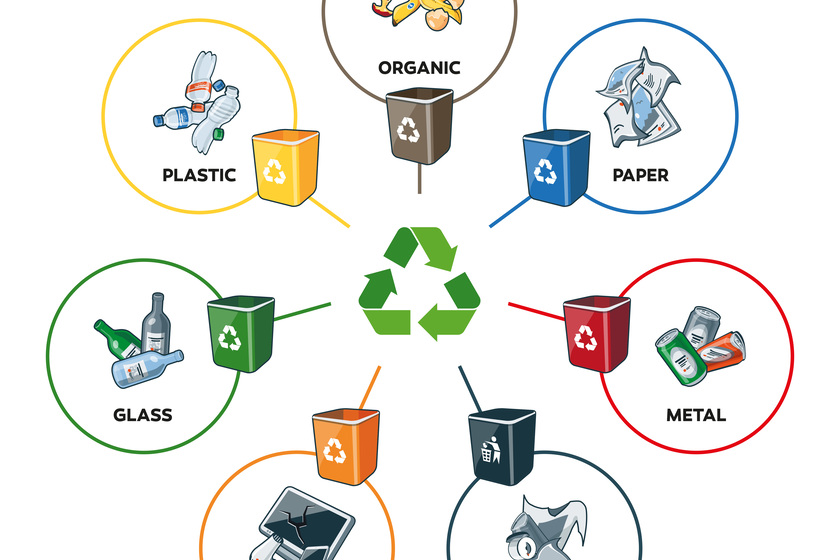Understanding the Classification and Handling of Different Sorts Of Waste
Reliable waste monitoring is essential for environmental sustainability, requiring a comprehensive understanding of the category and handling of different waste types. Household waste, industrial byproducts, harmful materials, electronic refuse, and natural residues each require distinct protocols to ensure safety and security and decrease eco-friendly damages.

Household Waste
Family waste, including a broad selection of disposed of materials generated from day-to-day living activities, represents a substantial part of the total waste stream - recycling lives services. This category includes organic waste such as food scraps, lawn cuttings, and paper products, together with inorganic products like plastics, steels, and glass. The varied nature of household waste requires efficient category and monitoring to mitigate environmental impact and advertise sustainable living techniques
Effective house waste monitoring starts with partition at the resource, facilitating recycling, composting, and safe disposal. Organic waste, as an example, can be composted to create nutrient-rich soil amendments, reducing garbage dump problem and improving dirt health and wellness. Recyclable materials, including paper, glass, and particular plastics, can be refined and repurposed, decreasing and conserving resources energy usage related to new material manufacturing.
Furthermore, dangerous household waste such as batteries, digital gadgets, and cleaning chemicals requires specialized taking care of to stop soil and water contamination. Public awareness projects and practical disposal choices play vital functions in guaranteeing appropriate disposal and recycling of these materials. By carrying out robust waste reduction approaches and promoting area engagement, communities can considerably relieve the ecological impact of house waste.
Industrial Waste
Hazardous waste, a significant contributor to worldwide waste generation, includes a varied range of materials created by production, construction, and other industrial activities. This classification consists of byproducts such as scrap metal, plastics, rubber, chemicals, and other residues. The structure and quantity of commercial waste can vary considerably depending upon the sector and manufacturing procedures entailed. Reliable monitoring of commercial waste is crucial for reducing environmental impact and promoting sustainable practices.
The handling of commercial waste generally includes a number of procedures: collection, therapy, disposal, and partition. Collection systems are made to effectively gather waste materials from various sources within a commercial procedure. Partition is essential, as it ensures recyclable products are divided from non-recyclable ones, which can be directed towards ideal recycling or disposal networks. Therapy processes, including physical, chemical, and organic approaches, are utilized to decrease the toxicity, quantity, and ecological impact of the waste. Disposal techniques like landfilling or incineration are used for waste that can not be reused or dealt with.
Taking on approaches such as waste reduction, source healing, and recycling can dramatically lower the concern of hazardous waste on the environment, adding to even more sustainable industrial techniques.
Hazardous Waste

The category of harmful waste is normally based upon its chemical and physical attributes. Hazardous wastes consist of dangerous compounds that can create damaging wellness effects even at low concentrations. Destructive wastes can harm or damage living materials and tissues. Flammable wastes can conveniently spark, posturing fire threats, while responsive additional reading wastes can trigger explosions or launch poisonous gases upon call with other substances.
Reliable contaminated materials monitoring entails a number of vital practices: recognition and segregation of unsafe materials, secure transportation and storage space, and appropriate therapy and disposal. Treatment approaches might include chemical neutralization, stablizing, and incineration. Regulatory conformity is vital, led by frameworks such as the Source Conservation and Healing Act (RCRA) in the USA, which guarantees ecologically audio and secure management of harmful waste.
Digital Waste
Electronic waste, typically abbreviated as e-waste, stands for a growing challenge in waste administration as a result of the quick obsolescence of innovation. This group includes a wide variety of disposed of digital tools, consisting of mobile phones, computer systems, tvs, and household appliances. The complexity of e-waste hinges on its structure; these products consist of a blend of beneficial products such as gold and copper, along with unsafe materials like cadmium, mercury, and lead.

Regulations and regulations, such as the European Union's Waste Electronic and electric Equipment (WEEE) Instruction, objective to promote liable e-waste administration. These plans mandate makers to help with the collection and recycling of electronic products, consequently minimizing the concern on landfills and lessening environmental contamination.
Organic Waste
Organic waste, encompassing eco-friendly products such as food scraps, yard trimmings, and farming residues, comprises a substantial part of the local strong waste stream. This type of waste is noteworthy not just for its volume yet also for its possible environmental effect otherwise managed appropriately. Organic waste can break down anaerobically in land fills, creating methane, a potent greenhouse gas adding to environment change.
Appropriate handling of natural waste involves a number of strategies. Composting is an extensively embraced approach, transforming natural products into useful garden compost that can enhance dirt and support lasting farming. This process likewise lowers the volume of waste sent out to landfills. An additional method is anaerobic food digestion, which breaks down raw material in the absence of oxygen, generating biogas that can be made use of as a renewable resource resource. Additionally, drawing away food waste from land fills with contribution programs can alleviate food instability while reducing waste.
Municipalities and companies are significantly identifying the value of organic waste management. Implementing comprehensive natural waste reusing programs not only reduces environmental influences yet likewise aligns with broader sustainability objectives, advertising a circular economic climate where sources are consistently reused and repurposed.
Conclusion
Effective waste monitoring and ecological security necessitate a thorough understanding of link the category and handling of different waste types. Household, commercial, harmful, electronic, and organic waste each call for unique procedures for segregation, therapy, and disposal. Appropriate management lessens environmental influence, saves resources, and advertises sustainability. Carrying out proper techniques for each waste type ensures secure and accountable waste management techniques, eventually contributing to the defense of ecological communities and public wellness.
Reliable waste management is pivotal for ecological sustainability, calling for a detailed understanding of the classification and handling of different waste kinds.Household waste, including a wide range of discarded materials created from everyday living tasks, stands for a significant part of the overall waste stream.Industrial waste, a significant factor to worldwide waste generation, encompasses a varied range of products generated by manufacturing, construction, and various other industrial tasks (recycling lives services).Hazardous waste, a critical worry in waste monitoring, comprises materials that present substantial risks to human health and wellness and the atmosphere due to their poisonous, corrosive, flammable, or responsive residential properties.Organic waste, encompassing eco-friendly products such as food scraps, lawn trimmings, and farming residues, comprises read this a considerable section of the community solid waste stream
Comments on “How Recycling Lives Services Make a Distinction in Lasting Waste Monitoring”